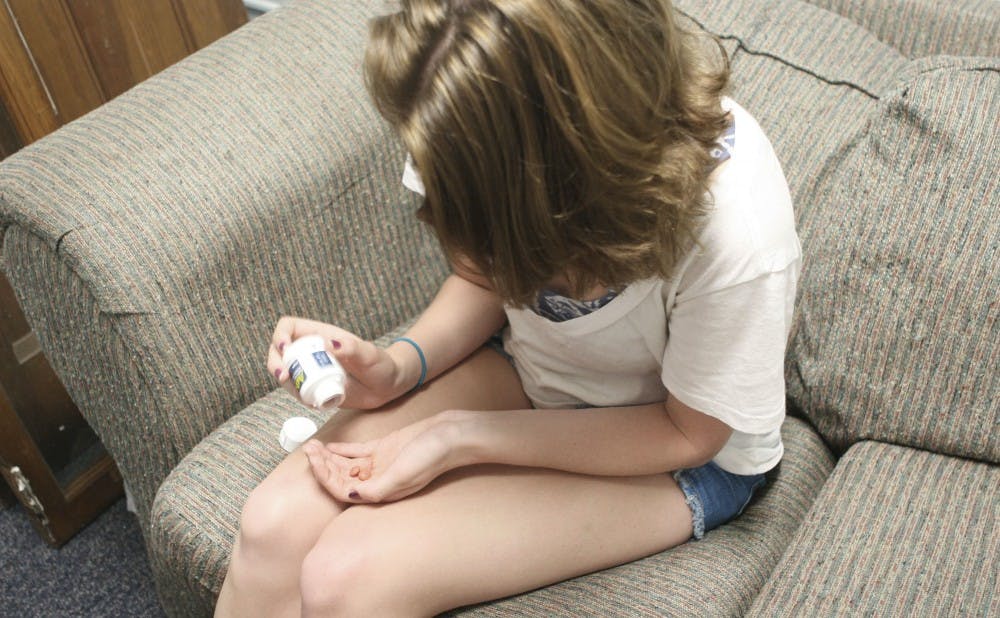Electroconvulsive therapy—which has long been a source of heated debate among medical professionals—has a foundation of support in the Duke Medical Center.
The therapy is geared toward patients suffering from mental illnesses such as severe depression, and involves inducing patients into a seizure with a series of electric shocks to the brain. The procedure has reemerged in recent years within the medical community, both at the University and at large.
“ECT is the closest thing we have to a cure for depression today,” said Dr. Sarah Lisanby, M.D., Trinity ‘87, Medicine '91, Health Sciences '95, professor and chair of psychiatry and behavioral studies, wrote in an email Wednesday.
The procedure is done only to patients who suffer from severe mental conditions. The patient first undergoes a comprehensive medical evaluation from a range of doctors, who look for conditions such as heart defects. Once cleared by the medical team, the patient is placed under general anesthesia and given muscle relaxers. Electrodes are placed on the patient’s scalp, and a small electric current is pumped into the patient’s brain.
The procedure often takes only a few minutes, and the patients are often discharged that very day.
“The media, especially movies, still portrays [electroconvulsive therapy] as a brutal, cruel treatment, which is absolutely untrue,” said Dr. Mustafa Husain, Health Science '90, instructor temporary in the department of psychiatry and behavioral sciences.
ECT is most often introduced as a last resort to treatment resistant patients, who have tried antidepressants and other forms of therapy.
“In the general psychiatry practices it is considered the last option, which is very unfortunate,” Husain said, adding that ECT should “absolutely” be introduced earlier in the treatment process. “[ECT] should be a first or second-line treatment."
Lisanby said that there is a disparity between the public perception of ECT and the medical reality.
“Fictional portrayals of ECT...are not factual and should not be mistaken as such,” Lisanby said. “ECT is the most effective and rapidly acting treatment for severe depression that we have today.”
Shawn McClintock, associate professor in psychiatry and behavioral sciences, added that patients who undergo ECT often wake up feeling as though their depression is gone.
Lisanby noted that the most common side effects of ECT are headache, muscle soreness and memory loss.
“The risk of memory loss can be reduced substantially by modifying the way the treatment is administered,” she said.
While the therapy is used to treat depression in the vast majority of cases, it can be used to treat other mental disorders such as catatonia, schizophrenia, bipolar disorder, Parkinson’s and even epilepsy.
Under Lisanby's leadership, the University has moved into the forefront of electroconvulsive therapy, Husain said.
“One of the reasons I decided to go to Duke was because of this infrastructure," Husain said, adding that the University is a “powerhouse” in ECT research.
Washington University in St. Louis and the Mayo Clinic are also leaders in the field, Husain noted.
Lisanby said the University is “one of the leading universities in terms of ECT research internationally.”
While the University’s medical professionals are proud of the progress that has been made, they acknowledge that ECT is not a cure for depression, or anything, for that matter.
“We are not 100 percent sure how ECT works—to say that ECT is a cure would be misinformation,” Husain said.
He added that the cause of depression is still unknown.
“I wish we could say it was a cure, but patients that undergo ECT still need care,” McClintock added, outlining the fact that depressive episodes can come back even after treatment. “One size does not fit all.”
McClintock said that the University can only hope to make depression and other mental diseases things of the past by making treatments such as ECT “better, safer and more effective.”
“Severe depression can kill," Lisanby said. "ECT can save lives by rapidly and effectively preventing suicide. The medical literature provides strong support for these statements.”
Get The Chronicle straight to your inbox
Signup for our weekly newsletter. Cancel at any time.

